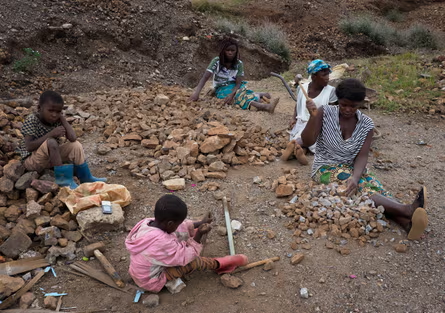Human Rights Watch (HRW) has accused the Zambian government of enabling hazardous mining in the heavily lead-contaminated town of Kabwe, worsening severe health risks for children.
Located 150 kilometres (95 miles) north of Lusaka, Kabwe is among the world’s most polluted places due to decades of lead and zinc mining. Despite the mine’s closure in 1994, residents are still exposed to toxic lead in the soil and dust surrounding homes, schools, and roads.
HRW’s report claims that authorities have continued to issue mining permits to South African, Chinese, and Zambian companies, allowing them to extract and process lead waste in the area. The rights group urged the government to revoke these licenses and prioritise environmental cleanup.

“Companies are profiting in Kabwe from mining, removing, and processing lead waste at the expense of children’s health,” said HRW’s children’s rights director, Juliane Kippenberg.
Lead, a highly toxic metal, can cause severe health issues, including brain damage and death, particularly in children, according to the World Health Organization.
HRW cited alarming statistics, revealing that more than 95% of children living near the Kabwe mine have dangerously high lead levels in their blood, with nearly half requiring urgent medical intervention.
The report highlighted that toxic waste has been transported to various sites across the city, creating unfenced piles of lead-contaminated material several metres high, exposing up to 200,000 people to pollution.
“I have tried all medicines to cure my grandson, but it was found that he has high lead poisoning,” said Rose Asabi, a 58-year-old Kabwe resident, during the report launch. “He cannot do well at school because of lead poisoning.”
The concentration of lead in the soil has reached 60,000 milligrams per kilogram—300 times the hazard threshold set by the US Environmental Protection Agency.
In 2022, a UN expert classified Kabwe as a sacrifice zone where pollution and its health consequences have become a permanent reality for local communities.
HRW criticised the government’s inaction, stating, “The Zambian government should be protecting people from highly hazardous activities, not enabling them.”
The Kabwe mine was operated by Anglo American from 1925 to 1974, during which experts estimate that two-thirds of the lead in the local environment was deposited. The company, however, denies responsibility, stating that it never owned or operated the mine and only provided technical services. The Zambian government took control of the mine after nationalising the industry, running it until its closure in 1994.

